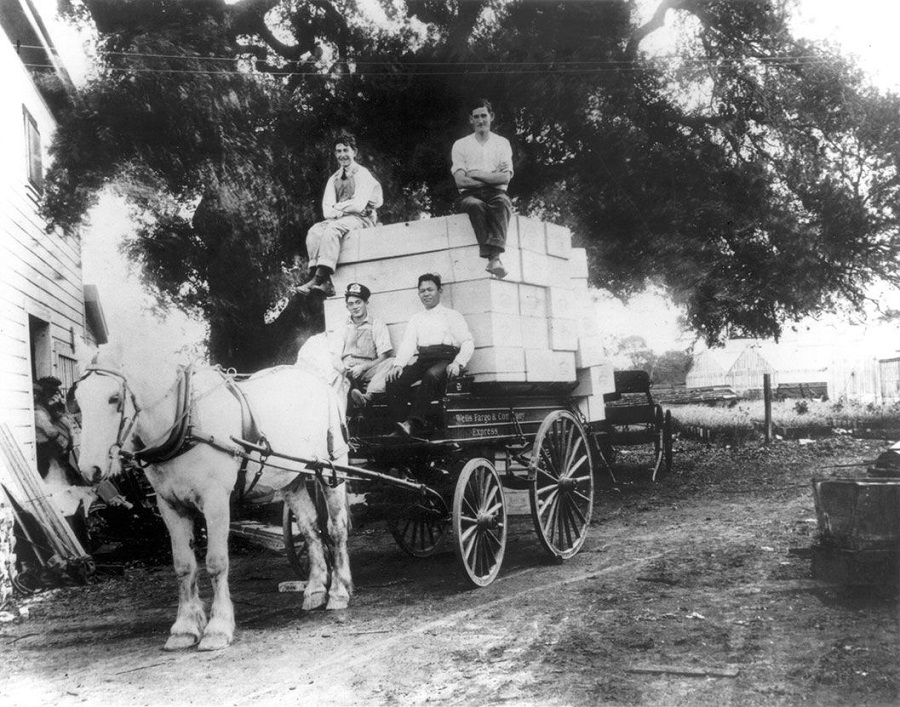The recent announcement that the Bay City Flower Company is going out of business closed the books on a story that began decades ago when the Japanese community planted roots that would gain Redwood City the title of “the chrysanthemum capital of the world.”
Bay City Flower Company moved to Half Moon Bay in 1959, relocating from Redwood City where it was founded in 1910 by Japanese immigrant Nobuo Higaki. According to the company, Higaki cut carnations, chrysanthemums and gardenias for florists in San Francisco. Four generations later the company called it quits, mainly because of the cost of doing business “nationally while operating in the costliest place in the nation,” said company spokesman Harrison Higaki.
According to the Redwood City Historical Blog Series, in 1907 immigrant brothers Eikichi and Sadakusu Enomoto started growing chrysanthemums in Redwood City and shipped them nationwide. Sadakusu Enomoto’s son, William, recalled in a 1967 interview that he and his father delivered a railroad car filled with chrysanthemums to the All Saints Day festivities in New Orleans in 1913. The shipment proved so popular that by 1920 Redwood City growers were sending 20 rail cars to the New Orleans event.
The Enomoto brothers helped immigrants from Japan to start their own flower-growing businesses, enabling them to soon dominate the field. By 1926 Redwood City drew the moniker of the “chrysanthemum capital of the world” with local income of more than $7 million. The flower industry began to expand to other cities in the area and in 1931 the California Chrysanthemum Growers Association was founded.
The success of the flower industry in the area came at a time of “intense anti-Asian racist sentiment and policy,” according to the October 2018 issue of Historical Happenings, a monthly publication of the San Mateo County Historical Association. Local boosters promoted the Peninsula as “a flower-filled suburb” with campaigns that “often framed out the very Japanese-American working-class families whose labor cultivated the blooms they celebrated.”
Japan’s bombing of the American fleet at Pearl Harbor in 1941 proved to be the coup de grace for the industry. Japanese Americans were rounded up and sent to internment camps located away from the Pacific Coast during a war that, ironically, saw the enemy resort to kamikaze suicide planes it called “floating chrysanthemums.”
The Enomotos escaped being relocated, having moved to Utah before the government issued the evacuation order. Their property and other financial interests in Redwood City were watched over by their banker, a remarkable man named J. Elmer Morrish, who performed the same service for many of his interned clients. Kevin Kaatz, a professor at Cal State East Bay, co-authored a book entitled “Citizen Internees: A Second look at Race and Citizenship in Japanese-American Internment Camps” that recounts the Morrish episode.
“Surprisingly, not much has been written about what the Japanese-Americans were doing to actually preserve their houses, property and businesses when they were forced into these camps,’’ Kaatz said. Some relied on Morrish “to help them navigate between their internment and what they were forced to leave behind.”
When Kaatz spoke at the Redwood City library in October, one member of the audience asked if Morrish might have had any financial advantage to gain by his efforts. Kaatz replied that he had read hundreds of letters exchanged between the banker and those in the camps and was convinced that for Morrish “it was a matter of the heart.”
Morrish, whose correspondence with those in the camps is preserved in the history room of the Redwood City main library, died in 1957 at the age of 71. The San Mateo Times reported his death on the front page. The obituary recalled his many civic honors, including being selected Redwood City’s Outstanding Citizen a year earlier. There was no mention of his helping people in the camps.
Another oversight can be seen at the post office in Redwood City, according to the aforementioned Historical Happenings, which noted that a 1937 mural there called “Flower Farming and Vegetable Raising” fails to depict “legibly Japanese American workers.”
This story was originally published in the December print edition of Climate Magazine.






